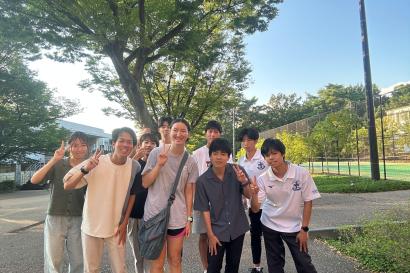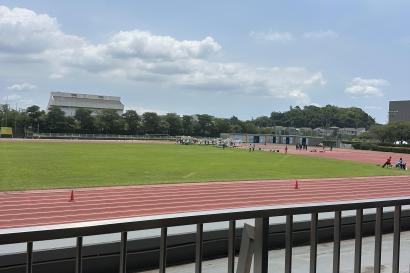One of the reasons I decided to study abroad in Japan is because its society is so vastly different from everything I know. Before going, I knew I'd have culture shock. But I wasn't expecting how even the smallest things would bring me culture shock and how I'd be surprised constantly, even a few days before I went back home.
Fancy Toilets
Now, I knew about Japan's fancy toilets before going there. I knew they had a bidet function and all these fancy options, but what I didn't expect was to see them in the places I'd least expect, and vice versa. I'd find a Japanese-style toilet in the roughest or most old-fashioned-looking places. For example, if I went out to a bar that had seen better days, I was fully expecting a regular toilet or goodness forbid, a squat toilet, but then it'd have an even fancier setup than some of the higher-scale malls I've been to. See, there are levels to the fanciness of toilets. There's the squatty potty, the regular toilet, a bidet toilet with the options on the side of the toilet bowl, and then the fancy toilet with the options on the wall. If they're silver-plated, that's really fancy. I've even seen a drying function. On the other hand, in the places I've most expected to see fancy toilets, they've had regular or squatty toilets instead. When I ran into one of Nanzan's bathrooms and discovered only squatty potties, I almost reconsidered and ran to another bathroom. But when in Japan, you do as the Japanese do.
No Paper
To continue the bathroom talk, one thing you should prepare for is to either bring a hand towel from home or buy one in Japan and carry it around with you everywhere because Japan's public bathrooms have no paper towels. And when I mean none, I mean I have only seen them twice. You are left either with a wind dryer (which isn't very sanitary) or just flailing your hands around and wiping them on your pants so now your pants are wet for a few minutes. As for toilet paper, I never saw more than one-ply my entire time there. So, if you're particular about your toilet paper, it's best to bring some from home.
Everything (Everything) Is Small
I knew clothes would be small before going to Japan, which is why I didn't skimp on bringing clothing to Japan like all the preparation documents from IES Abroad told me to do. And guess what: they were small. But I was not expecting all the other things that would be small in Japan. One of the first times I had the realization that everything would be small was during our orientation week in Inuyama, where my friends and I went to the mall during our free hours. I ordered a medium smoothie, as a large size wasn't available, and what I received literally had me laughing and showing it to my friends. I was expecting at least a cup akin to the grande size at Starbucks, but what I got was smaller than the palm of my hand with a width half the size of my hand. I finished it in what felt like four gulps, which was a rude awakening to the ongoing trend I'd be seeing throughout Japan. Cars are small, roads are small, houses are small, everything is small.
Most of the time, this worked out in my favor. I never was full in Japan after eating a meal, and I consider that a good thing. I was satisfied and was able to continue with my day until the next meal. I never had leftovers, and I never had a drink that went unfinished. My host family's home had everything they needed to be happy and raise their children, along with hosting an international student. Cars and roads are small because of a robust public transport system. It was something to get used to, and I never stopped being surprised by the smallness of everything, but soon enough, I stopped noticing that I was the tallest person on the train or that the water cups in restaurants were the size of my palm.
No Water Fountains
I didn't think I'd take water consumption for granted, but the entire time I was in Japan, I was daydreaming about the automatic water bottle fillers I have at my university because Nanzan only has two water fountains from what I saw, and they were in completely different buildings. If you're in public—forget about it. But this seems to be a trend in places other than Japan, as I hear that people studying abroad in Europe are constantly dehydrated as they can never find free water. At least water and its refills are free in Japanese restaurants! Definitely still bring a water bottle with you, but I had stopped carrying mine around on IES Abroad field trips since there would be nowhere to fill it up.
Vending Machines
One of the things I'll miss most about Japan is the vending machine. The jidouhanbaiki, which is quite a mouthful in Japanese, was like coming upon a convenient oasis, especially since I mentioned getting free water in public was impossible. Since one water bottle there is equivalent to 77 cents, it wasn't a huge deal to buy one once in a while. Additionally, vending machines will have a separate line just for hot things: coffee, hot chocolate (my favorite!), and even corn soup. They come out hot, which is so cool since they're sold in the same machine as cold stuff. Japanese engineering is the best.
Neighborhood Layouts
Japanese neighborhoods are super interesting to see from an American perspective because I'm used to suburban neighborhoods, where houses are lined up and more or less all look the same, and they form a somewhat uniform shape altogether, like a square or rectangular neighborhood. However, Japanese houses are strewn about haphazardly, with some facing diagonally and others facing backward. There are no front or backyards, and sometimes there isn't a road connecting to the house at all. I loved seeing these neighborhoods from the bullet train or bus and seeing all the differences, especially seeing how every house was completely different. I'm not sure how housebuilding works in Japan, but either each house had a different developer or Japanese house developers try to make every house as different as possible, and I really like that. If you ride a bus or bullet train, look outside and take in the neighborhoods. They're so cool!
Graveyards And Shrines
One thing I had to learn quickly to accept is the fact that graveyards will be placed quite literally anywhere in Japan, including between houses, right next to a restaurant, or in the middle of town. They aren't cordoned off or placed in a remote part of the city. They oftentimes don't have a fence and follow the same organizational structure as neighborhood layouts: that is to say, they don't have organization at all. It made me grow a different outlook towards death, where it isn't something to be scared of and something to be ignored, but something that's embraced by the community and something you can just pass by every day. Additionally, I thought Shinto shrines were few and far between, and the ones that do exist are extremely famous tourist sites However, I quickly realized that shrines are everywhere and in almost every neighborhood in Japan. They are just another way for Shintoists to practice their religion, akin to churches on every block in America, and I thought it was touching to see that.
These are some of the culture shocks that aren't as commonly discussed as "no trash cans" but things that still made a difference and stood out to me. I can't wait to go back and discover more culture shocks!

Isabella Madruga
I am a senior at Johns Hopkins University studying Writing Seminars (a fancy way of saying creative writing) and Sociology. My main goal in life is to be an author, so when I'm not scrolling on TikTok, I'm writing stories, reading, and daydreaming.






